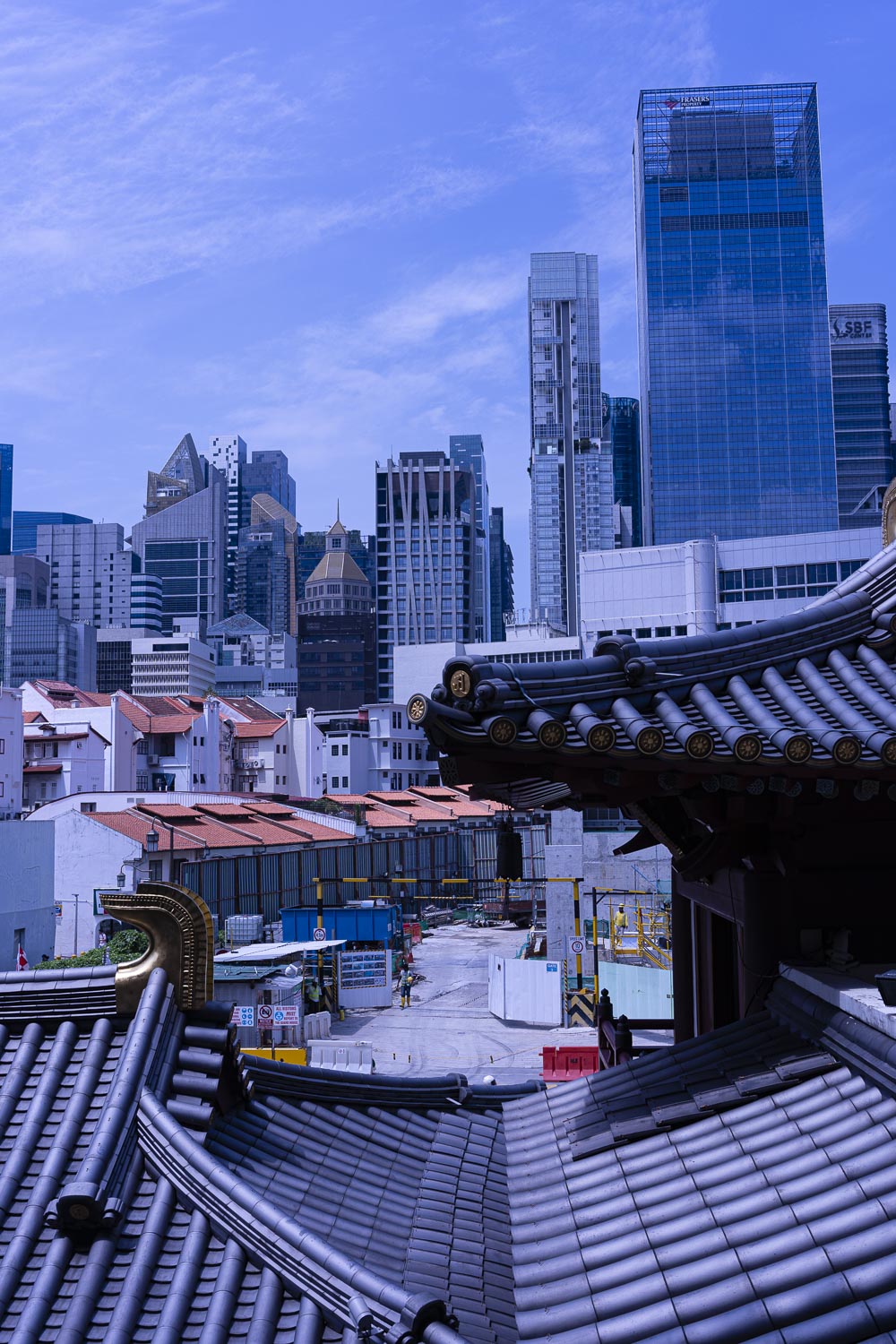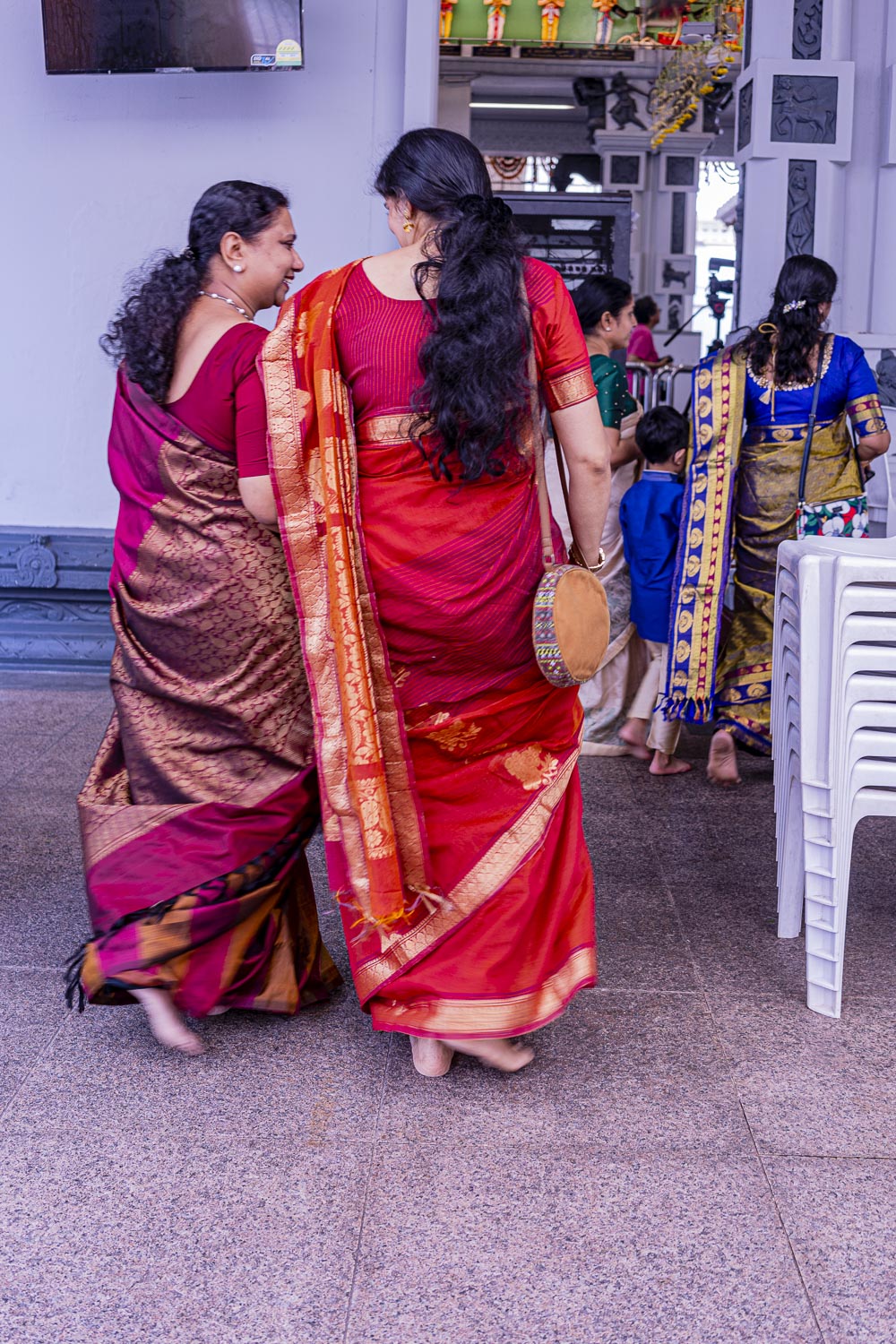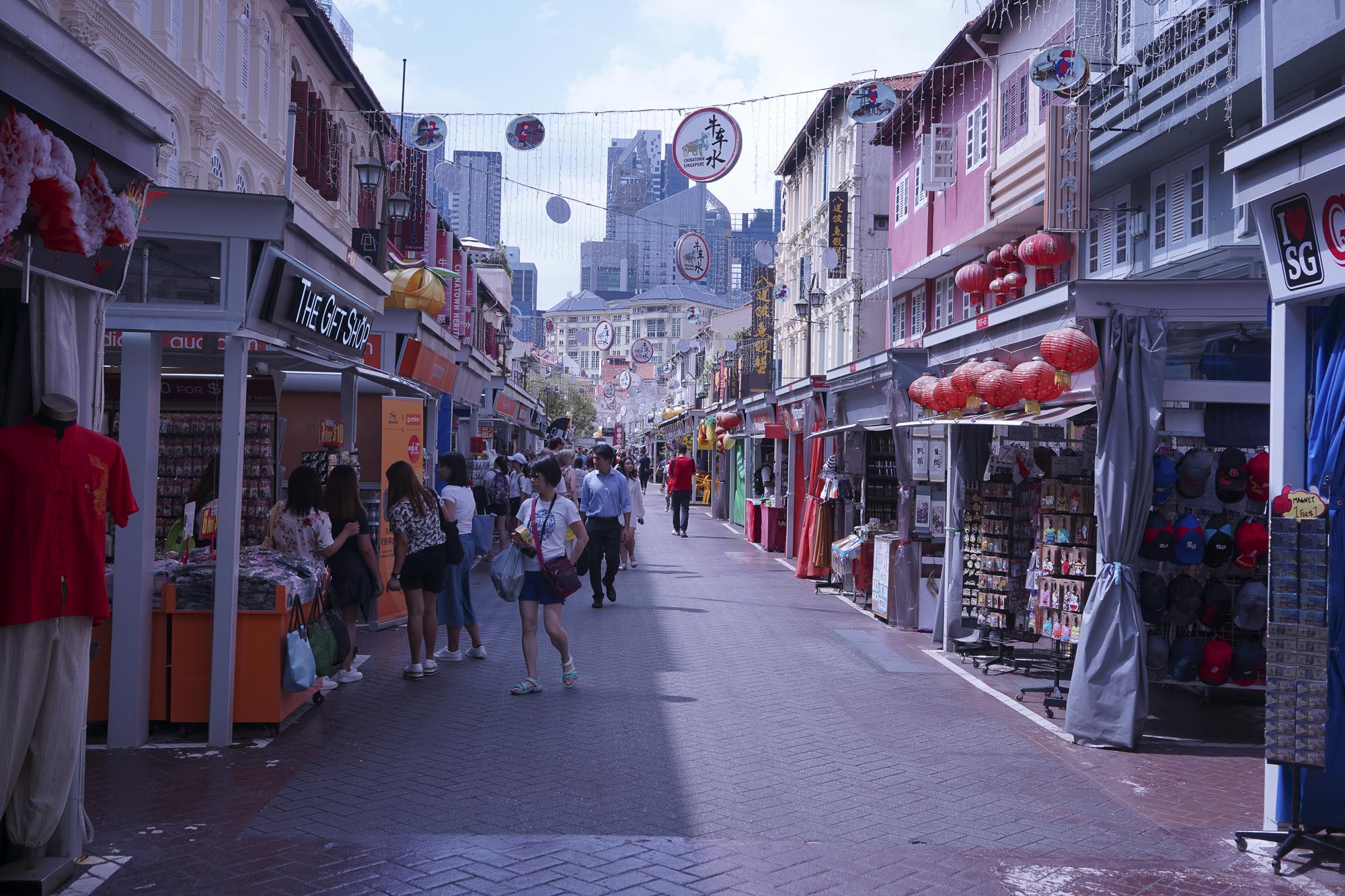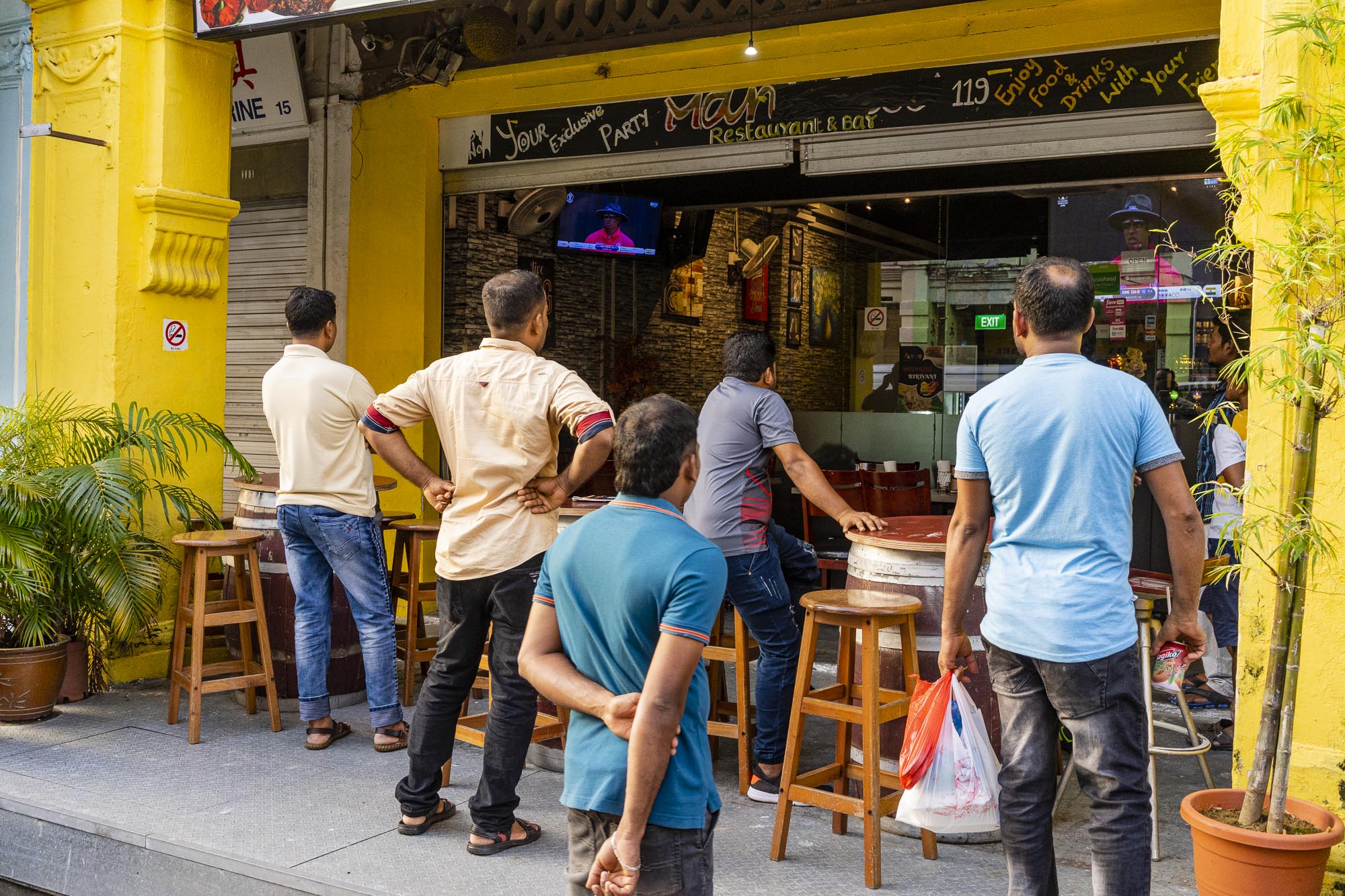

At the entrance to the Sri Srinivasa temple I hesitate. My dress covers my shoulders and reaches almost to my knees but I’m still not sure. I’m not a religious person but I absolutely respect anyone else’s choice to be so and I’d be mortified if I offended them by entering their holy placed inappropriately dressed. I ask a would be worshipper and he nods. Neil’s already in there, camera raised, so it’s a good job I’m allowed in.


The temple has been here since 1855 and now sits alongside a three-lane road next to a building site (there are a lot in Singapore), dwarfed by nearby skyscrapers. Small alters dedicated to different deities surround a larger central altar, all edged with highly decorated friezes, the deities themselves gilded and bright. At one a holy man chants as he burns leaves that release a pungent smelling smoke in which he bathes. Another rings a bell to accompany his chants. The whole place is awash with colour, enhanced by the rainbow of gorgeous saris worn by ladies attending a wedding at the main altar. The ceremony feels ancient, probably is, but guests hold cellphones up to record the event and the lights of a sound system blink in the background. A defibrillator hangs on the wall.

Singapore is a city of contrasts. Directly outside our hotel lies Little India. Amongst its low russet red roofs are flashes of vivid colour, walls painted jade green, golden yellow, aquamarine, the most striking a deep royal blue with bright red windows. Behind them rise steel and glass buildings that scrape the sky, part of the Singapore Eye peeping out from the side of one. Between the towers, from our room on the nineteenth floor, we can see slivers of the harbour, where ships wait patiently in the haze for their turn to dock. Directly across from us hard-hatted stick men scurry around in the skeleton of a tower under construction as an impossibly tall (and very insecure looking) crane lifts a skip from street level to an opening near the roof where it is captured and pulled in by more stick men. Our room faces east but in Singapore the sun doesn’t so much rise as shuffle over a horizon obscured by smog, managing to break through it by mid-morning.

We wander the narrow streets of Little India and Chinatown. Pavements, where there are any, are little more than a person wide and shops and cafes spill onto them, forcing us onto the road where vans squeeze between cars parked so tightly it’s impossible to walk between them. We stop at a hawker’s stall for a bowl of noodles with prawn dumplings which we dip into a rich broth. Soon the tables around us are full – did we luckily pick the right place to eat or did others follow? In the evening we try a local South Indian vegetarian restaurant. It’s full of locals, a good sign, and the owner is welcoming and friendly. He recommends the house specials and we follow his advice, cracking into a dosa over a foot long and stuffed with spiced potatoes. After choking on the chilli tomato dip alongside it I make Neil taste everything on the thali tray before I try it. There are a dozen or so small bowls, each filled with a delicious sauce with vegetables, pulses, rice, all fragrant with spices, into which we dip paratha and poppadom. We only realise our faux pas of eating with both hands when the young woman at the next table skilfully tears off pieces of paratha with one hand. I try it with our dessert, appam, a pancake like dish made from fermented rice flour over which we pour a sweetened coconut milk as we’d watched the locals do. We giggle as I make a complete mess of it, coming closer to splatting it around the walls than neatly popping it into my mouth. I deduce that it is probably a skill learned in childhood, like using a knife and fork is. I later wonder what they use to clean the turmeric colour from under their nails.

The heat envelopes us like a warm, damp towel. It’s pleasant in early morning and after dark, but oppressive during the day, and it seems that every indoor space has some form of air conditioning. In some cases it’s extreme and I need a jacket or wrap, which then makes outdoors feel even hotter. It’s difficult to acclimatise to such variances but people obviously do, judging that many wear more clothes than we tourists. Although even the sight of jeans is enough to make us break out in a sweat. Local ladies in business attire look cool and elegant whereas I, wearing the bare minimum required for decency, do a fair impression facially of a baked tomato and sweat like a working man.
We pause to apply sunscreen and the lotion slides over our slick-with-sweat skin. Thankfully it’s generally easy to stay out of the sun, even in a local park where walkways are covered in a wisteria like vine, bunches of orange flowers tumbling around us as we walk. The heat doesn’t prevent Neil breaking the backwards long jump record when he spies a snake on the path in front of us when walking through a small section of rainforest. It looks like the harmless tree snake we saw once in Australia (that provoked the same reaction). With the help of Google I identify it as a ‘mildly venomous’ paradise tree snake. Thankfully we’re at the airport before he finds out it can ‘fly’ down from tree tops and that slightly more than mildly venomous black cobras also hang out in Singapore, along with reticulated pythons. Neil is glad we don’t live in Singapore or Australia.

At night we head to Marina Bay, the best time to do so, when ostentatious, ridiculously high, buildings become light works, a myriad of colour reflected in the water. The helix bridge glows purple and snakes towards the Gardens by the Bay where a light show rivals tubes of exploding gunpowder for splendour. The music of Orff, Strauss and Tchaikovsky reverberates through the air as, above us, star-lights flash and dance against a backdrop of black sky. I lie back against the hard ground, mesmerised.

A great mix of adventures to start your trip.
LikeLiked by 1 person
A great start to your adventures.
LikeLiked by 1 person
Great piece, Makes me want to visit now 😊 gorgeous photos too
LikeLiked by 1 person
Looks amazing… Another place on the list!! Xx
LikeLiked by 1 person